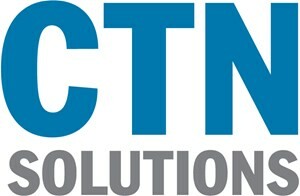In recent years, email service providers like Google and Yahoo have implemented stricter requirements and policies to enhance email security, protect user privacy, and combat spam and phishing attacks. While these changes are aimed at improving the overall email ecosystem, they can pose challenges for businesses and marketers seeking to reach their target audience effectively. To help your clients navigate these new requirements and maintain email deliverability, it’s crucial to understand the key factors at play and implement best practices accordingly.
Understanding the New Requirements
Both Google and Yahoo have implemented measures to improve email authentication and reduce the risk of fraudulent emails reaching users’ inboxes. These measures include:
- Domain-based Message Authentication, Reporting, and Conformance (DMARC): DMARC is an email authentication protocol that helps prevent domain spoofing and phishing attacks by allowing domain owners to specify how incoming emails should be handled if they fail authentication checks.
- Sender Policy Framework (SPF) and DomainKeys Identified Mail (DKIM): SPF and DKIM are authentication mechanisms that verify the authenticity of email senders and ensure that emails are not tampered with during transit.
- Bulk Sender Guidelines: Google and Yahoo have established guidelines for bulk email senders, requiring adherence to best practices for email content, frequency, and engagement metrics to maintain deliverability.
Best Practices for Compliance
To help your clients comply with these new requirements and maintain email deliverability, consider implementing the following best practices:
- Verify Domain Ownership: Ensure that your clients have verified ownership of their email domains and have configured SPF, DKIM, and DMARC records correctly to authenticate their emails.
- Use a Dedicated IP Address: If your clients send a high volume of emails, consider using a dedicated IP address for sending to improve reputation and deliverability.
- Monitor Deliverability Metrics: Regularly monitor email deliverability metrics such as bounce rates, open rates, and spam complaints to identify and address any issues promptly.
- Segment and Personalize Email Campaigns: Encourage your clients to segment their email lists based on user preferences and behavior and personalize email content to improve engagement and relevance.
- Educate Clients on Best Practices: Provide guidance to your clients on best practices for email marketing, including avoiding spammy tactics, maintaining a clean email list, and respecting user preferences and privacy.
Staying Ahead of the Curve
In the ever-evolving landscape of email marketing, it’s essential to stay informed about changes to email provider policies and adapt your strategies accordingly. By helping your clients comply with new Google and Yahoo email requirements and implementing best practices for email deliverability, you can ensure that their email campaigns remain effective and impactful in reaching their target audience.
In conclusion, navigating new email requirements from Google and Yahoo requires proactive measures and a commitment to best practices for email authentication and deliverability. By partnering with your clients to implement these measures, you can help them maintain a positive sender reputation, improve email engagement, and ultimately achieve their marketing goals effectively.
